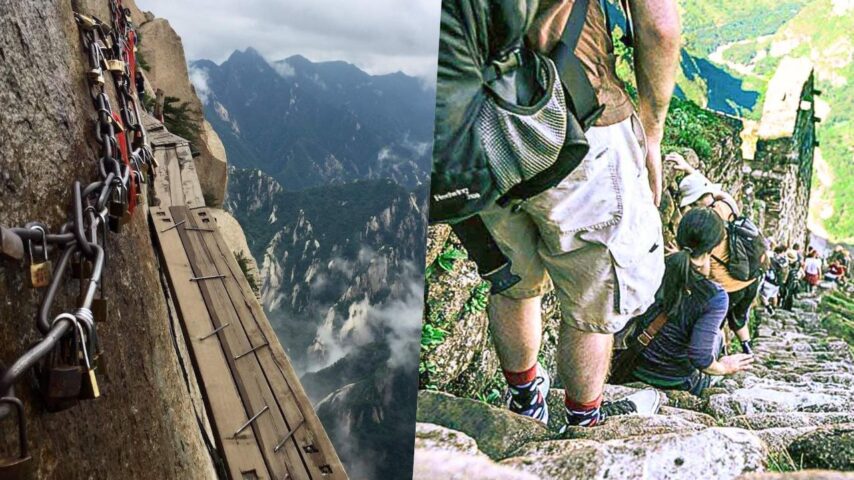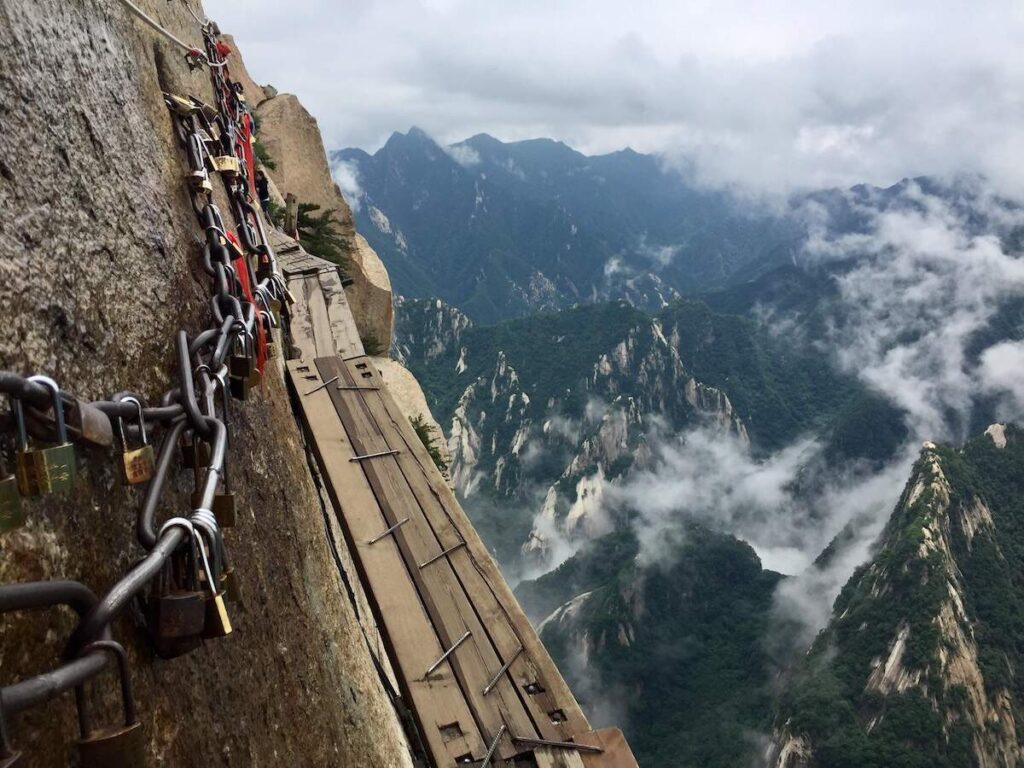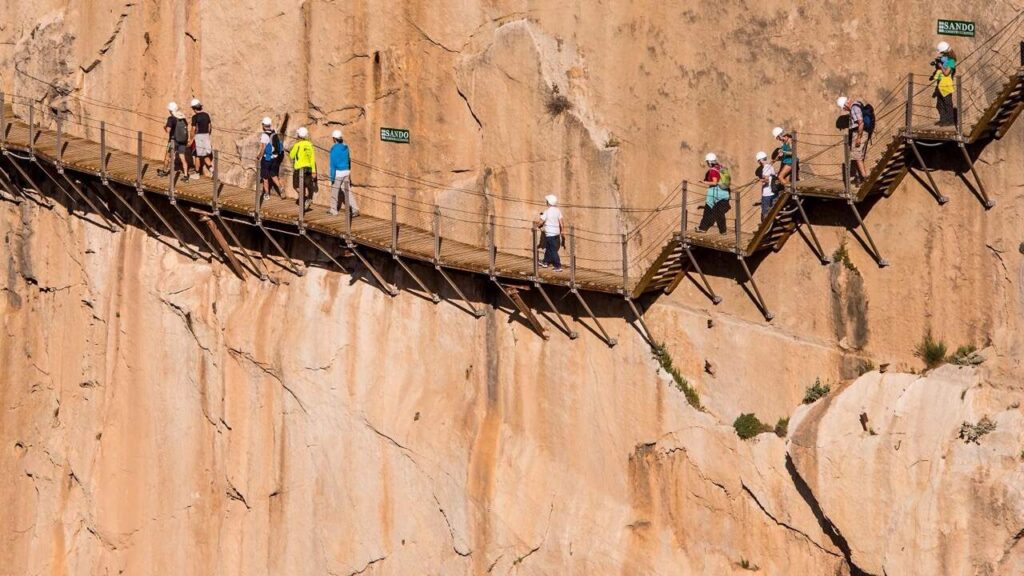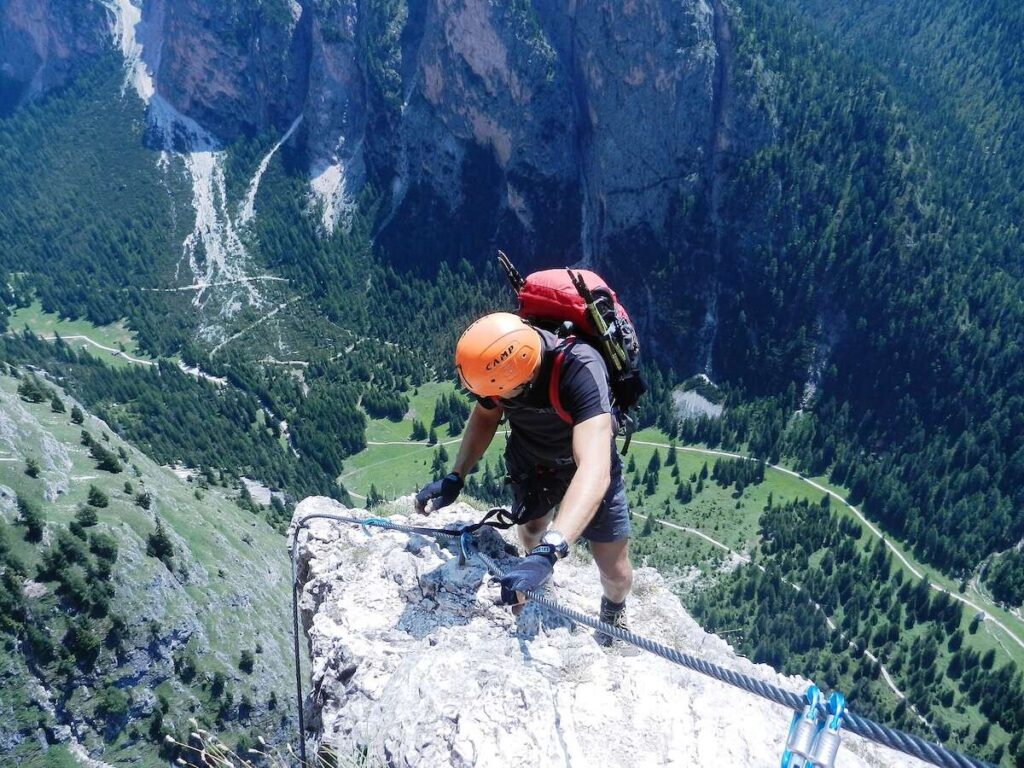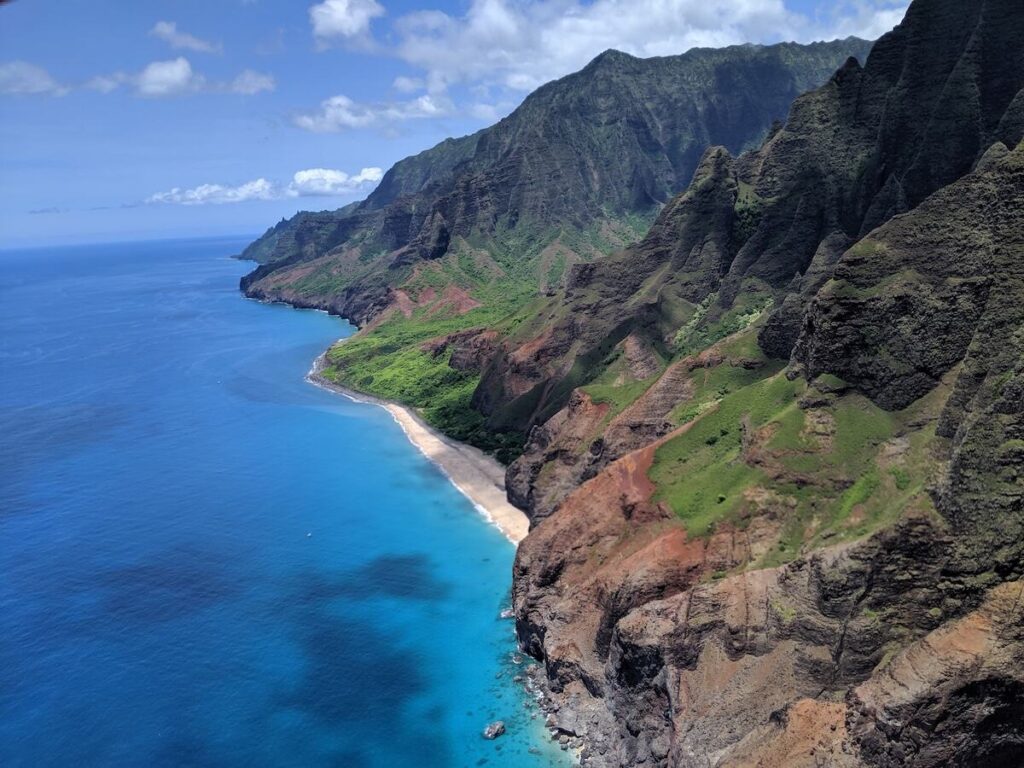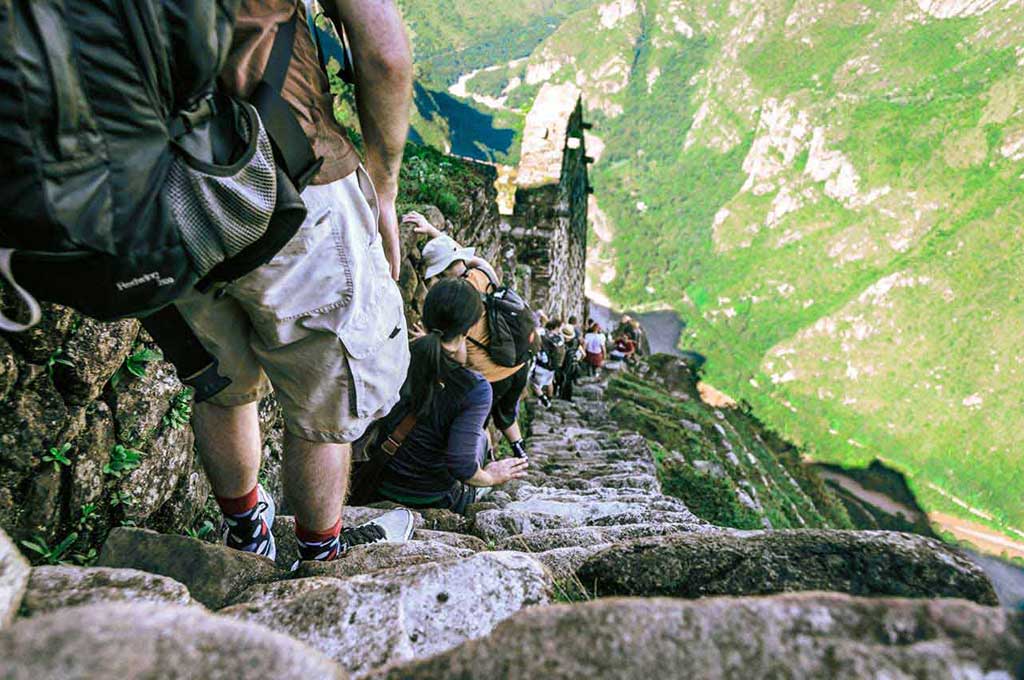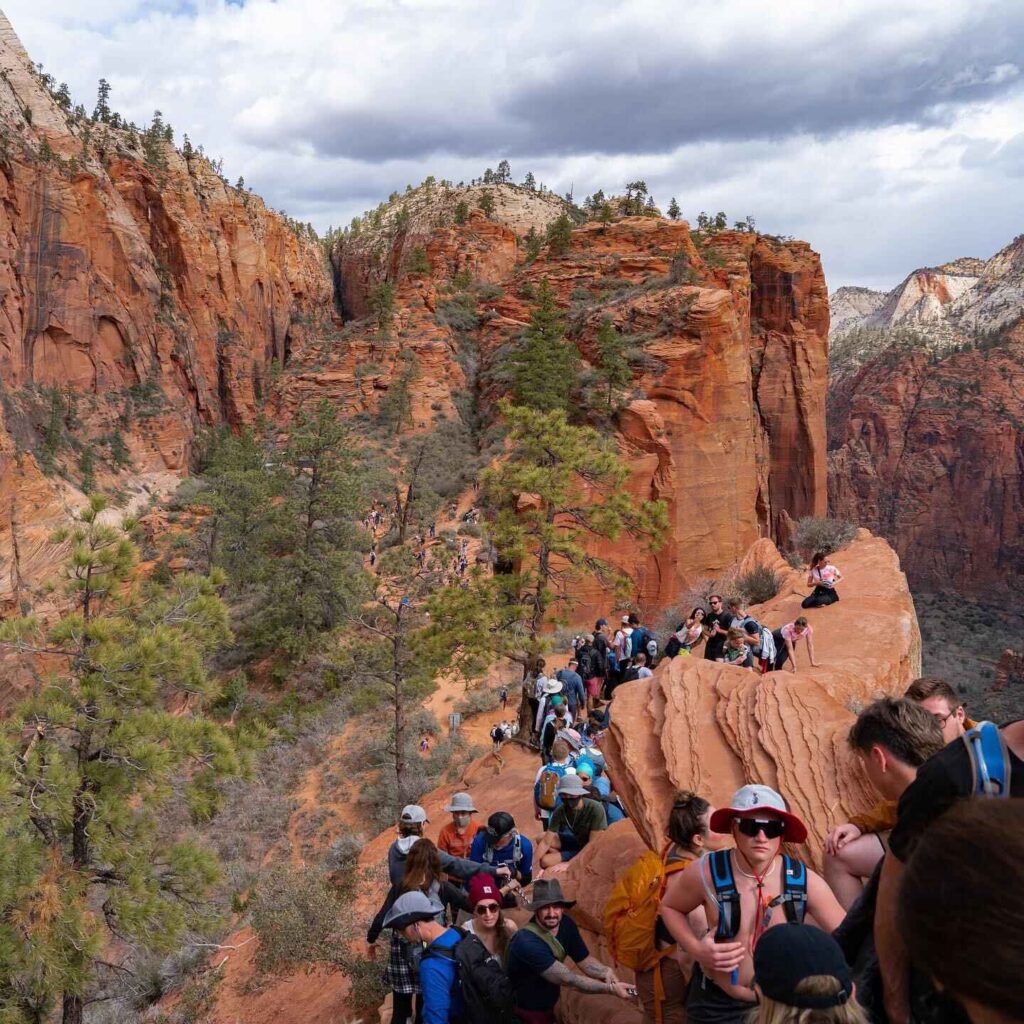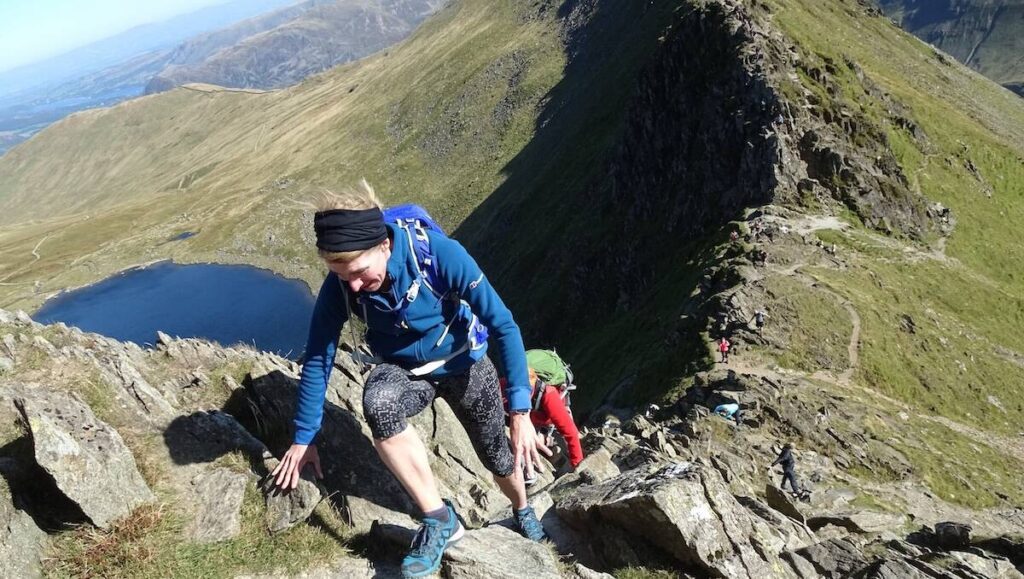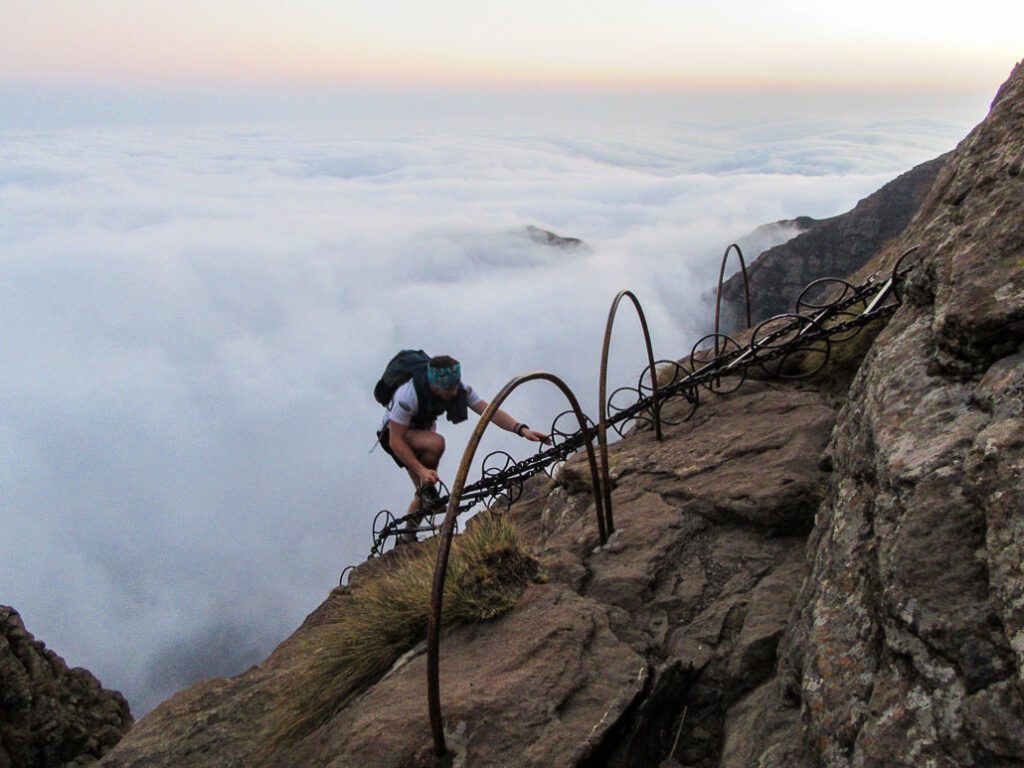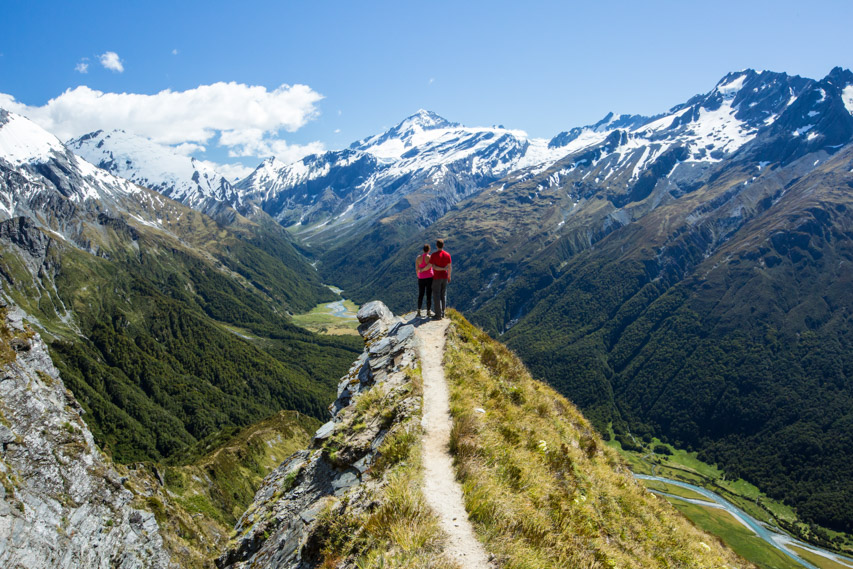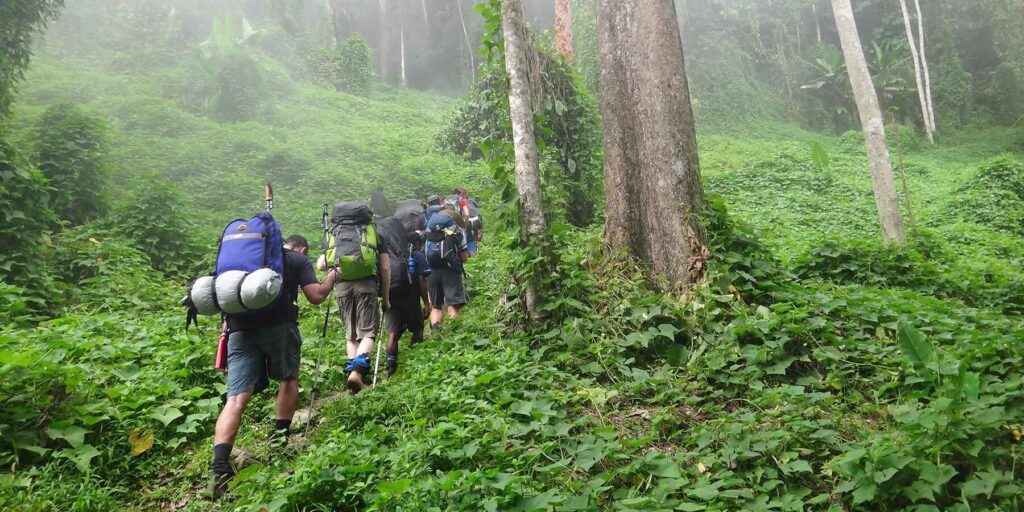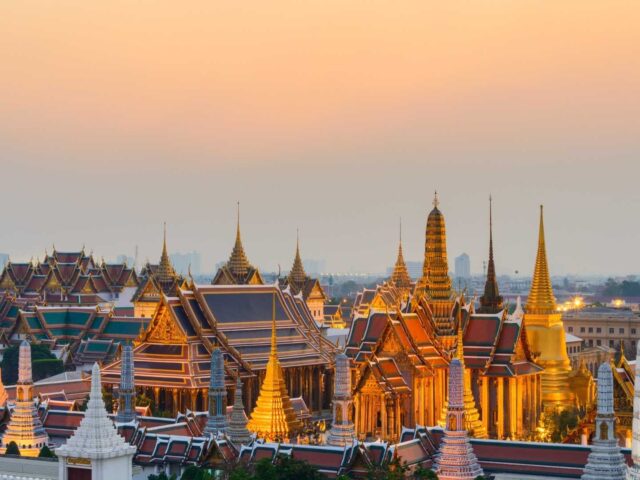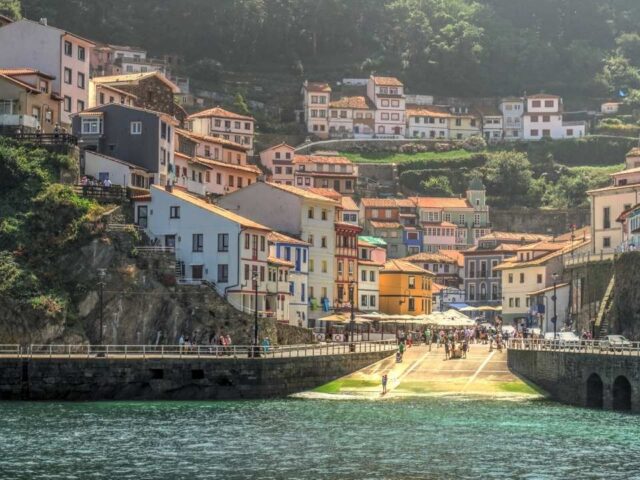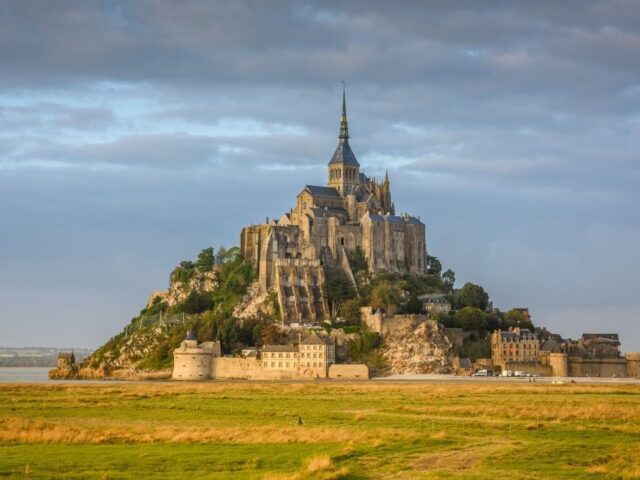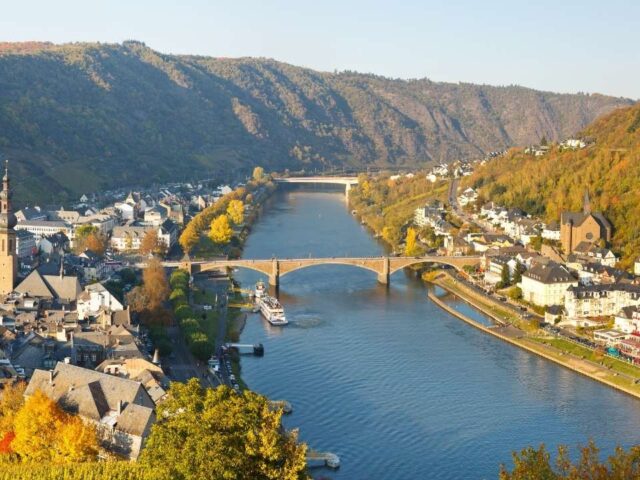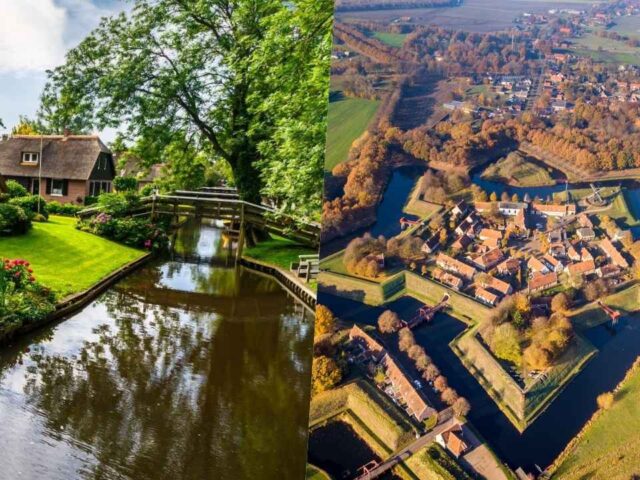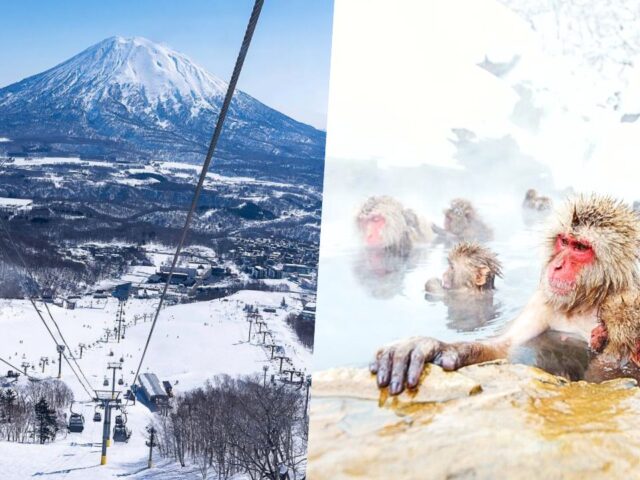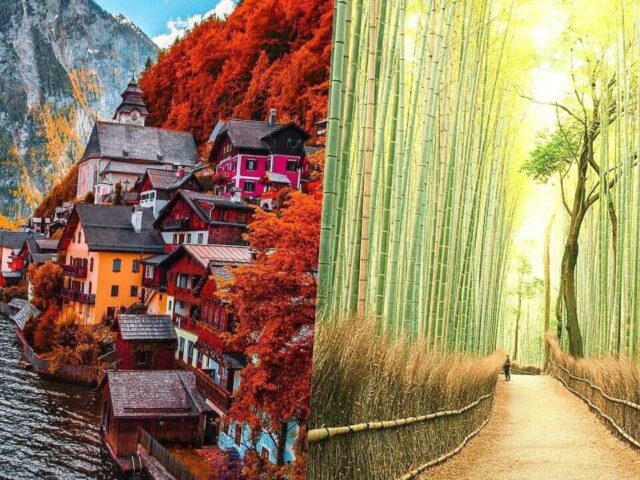Hiking enthusiasts seeking the ultimate thrill often venture into treacherous terrains. From narrow mountain paths to steep cliffs, these trails push the limits of human endurance. Let’s explore the world’s top 10 most dangerous hiking trails that challenge even the most experienced adventurers.
Table of Contents
- 1. Mount Huashan Plank Walk, China
- 2. El Caminito del Rey, Spain
- 3. Via Ferrata, Italy, Austria and Switzerland
- 4. Kalalau Trail, Hawaii
- 5. Huayna Picchu, Peru
- 6. Angel’s Landing, Zion National Park, USA
- 7. Striding Edge, England
- 8. Drakensberg Traverse, South Africa
- 9. Cascade Saddle, New Zealand
- 10. Kokoda Track, Papua New Guinea
1. Mount Huashan Plank Walk, China
The Mount Huashan Plank Walk in China is notorious for its heart-stopping narrow wooden planks. Perched high on the mountain’s face, this trail offers breathtaking views and an adrenaline rush like no other.
Hikers must navigate a series of rickety wooden planks and iron chains bolted to the cliff face. The path is barely wide enough for one person, with a sheer drop of thousands of feet on one side.
The most challenging part is the infamous “Plank Walk.” Here, hikers inch along wooden boards attached to the vertical cliff face, relying solely on a safety harness for protection.
Despite safety improvements in recent years, the Mount Huashan Plank Walk remains one of the world’s most dangerous hikes. The combination of dizzying heights, narrow paths, and unpredictable weather makes it a formidable challenge.
2. El Caminito del Rey, Spain
El Caminito del Rey, or “The King’s Little Pathway,” in Spain was once dubbed the world’s most dangerous walkway. This trail, pinned along the steep walls of a narrow gorge, has a dark history of fatal accidents.
Originally built in the early 1900s for workers at nearby hydroelectric plants, the path fell into disrepair. For years, thrill-seekers risked their lives on the crumbling concrete walkway, with some sections completely missing.
In 2015, extensive renovations made the trail safer, but it still offers a thrilling experience. The new walkway, while more secure, still hangs precariously over a 100-meter drop.
Hikers traverse narrow boardwalks and glass-floored sections, offering vertigo-inducing views of the gorge below. Despite improvements, the trail’s exposed nature and high winds continue to make it a challenging hike.
3. Via Ferrata, Italy, Austria and Switzerland
Via Ferrata, meaning “iron path” in Italian refers to a series of protected climbing routes found in the Alps. These trails combine hiking, climbing, and mountaineering, offering a unique and often dangerous experience.
Originally created during World War I to help move troops through the Dolomites, Via Ferrata routes now attract adventure seekers. The trails feature iron rungs, pegs, and cables fixed to the rock face.
While safety equipment like harnesses and helmets are mandatory, the exposed nature of these routes poses significant risks. Hikers must be prepared for rapid weather changes, rockfalls, and the physical demands of climbing.
Some of the most challenging Via Ferrata routes include the Ivano Dibona in Italy and the Mürren-Gimmelwald in Switzerland. These hiking trails test both physical endurance and mental fortitude.
4. Kalalau Trail, Hawaii
The Kalalau Trail on Hawaii’s Nā Pali Coast is a stunning yet treacherous 11-mile path. It winds along the rugged coastline, offering breathtaking views of the Pacific Ocean and lush valleys.
This trail is known for its narrow paths, often slick with mud and rain. Steep drop-offs and crumbling cliff edges make certain sections particularly dangerous.
One of the most notorious parts is “Crawler’s Ledge,” a narrow section with a sheer drop to the ocean below. Heavy rains can cause flash floods and landslides, adding to the trail’s dangers.
Despite its beauty, the Kalalau Trail has claimed several lives over the years. Unprepared hikers often underestimate the trail’s difficulty and the harsh tropical conditions.
5. Huayna Picchu, Peru
Huayna Picchu, the mountain looming over Machu Picchu, offers a challenging and dangerous hike. This trail is often called the “Stairs of Death” due to its steep, ancient Inca stone stairs.
The ascent involves climbing nearly vertical stone steps, some of which are over a thousand years old. Many sections have no handrails, with drops of several hundred feet on either side.
At the summit, hikers must navigate through narrow caves and along ledges with minimal protection. The high altitude adds to the physical challenge, causing shortness of breath and fatigue.
While the views of Machu Picchu from the top are spectacular, the descent can be even more treacherous. The steep, worn steps become especially dangerous when wet.
6. Angel’s Landing, Zion National Park, USA
Angel’s Landing in Zion National Park is a thrilling yet perilous hike that attracts thousands of adventurers each year. The trail ends at a narrow ridge of rock with steep drop-offs on either side.
The final half-mile of the trail is the most challenging. Hikers must use chains bolted into the rock to navigate narrow ledges and steep inclines.
With drops of over 1,000 feet on either side, this section is not for the faint of heart. Strong winds and overcrowding can make the narrow path even more dangerous.
Despite safety measures, several fatalities have occurred at Angel’s Landing. The combination of height, exposure, and physical demands makes it one of America’s most dangerous hiking trails.
7. Striding Edge, England
Striding Edge, leading to the summit of Helvellyn in England’s Lake District, is a narrow arête that challenges even experienced hikers. This knife-edge ridge offers little room for error.
The trail involves scrambling along a rocky spine with steep drops on both sides. In places, the path narrows to just a few feet wide, with sheer cliffs falling away on either side.
Weather conditions can change rapidly, making the exposed ridge treacherous. Fog, rain, and snow can reduce visibility and make the rocks slippery.
While not technically difficult, Striding Edge has claimed several lives over the years. The combination of exposure, unpredictable weather, and the psychological challenge of the narrow ridge make it a formidable hike.
8. Drakensberg Traverse, South Africa
The Drakensberg Traverse in South Africa is a high-altitude hiking trail known for its stunning views and significant dangers. This 65-kilometer route follows the escarpment of the Drakensberg Mountains.
Hikers face numerous challenges, including extreme weather conditions, high altitude, and exposed sections. The trail often requires navigating along narrow ledges with steep drop-offs.
One of the most notorious sections is the chain ladders at Sentinel Peak. These metal ladders, bolted to the rock face, are the only way to ascend or descend certain parts of the trail.
The remote nature of the Drakensberg Traverse adds to its danger. Hikers must be self-sufficient and prepared for emergencies, as rescue operations can be difficult in this rugged terrain.
9. Cascade Saddle, New Zealand
The Cascade Saddle route in New Zealand’s Mount Aspiring National Park is a beautiful but treacherous alpine trek. This challenging hike has claimed several lives over the years.
The trail involves steep ascents and descents on exposed terrain. One particularly dangerous section requires navigating a near-vertical grass slope, which becomes extremely slippery when wet.
Weather conditions in this alpine environment can change rapidly, adding to the trail’s dangers. Fog, rain, and snow can make navigation difficult and increase the risk of falls.
The Department of Conservation in New Zealand has issued warnings about the Cascade Saddle route, emphasizing the need for proper equipment and alpine experience.
10. Kokoda Track, Papua New Guinea
The Kokoda Track in Papua New Guinea is a grueling 96-kilometer trail through dense jungle and rugged mountains. While not technically difficult, its remoteness and harsh conditions make it one of the world’s most dangerous hikes.
Hikers face extreme humidity, torrential rains, and the risk of tropical diseases. The trail crosses numerous rivers and streams, which can become dangerous during heavy rains.
The physical demands of the Kokoda Track are intense. Steep ascents and descents, combined with muddy and slippery conditions, test even the fittest hikers.
The remote location adds to the danger. Medical facilities are scarce, and evacuations can be difficult in emergencies. Several hikers have died on the trail, mostly due to medical emergencies exacerbated by the harsh conditions.

